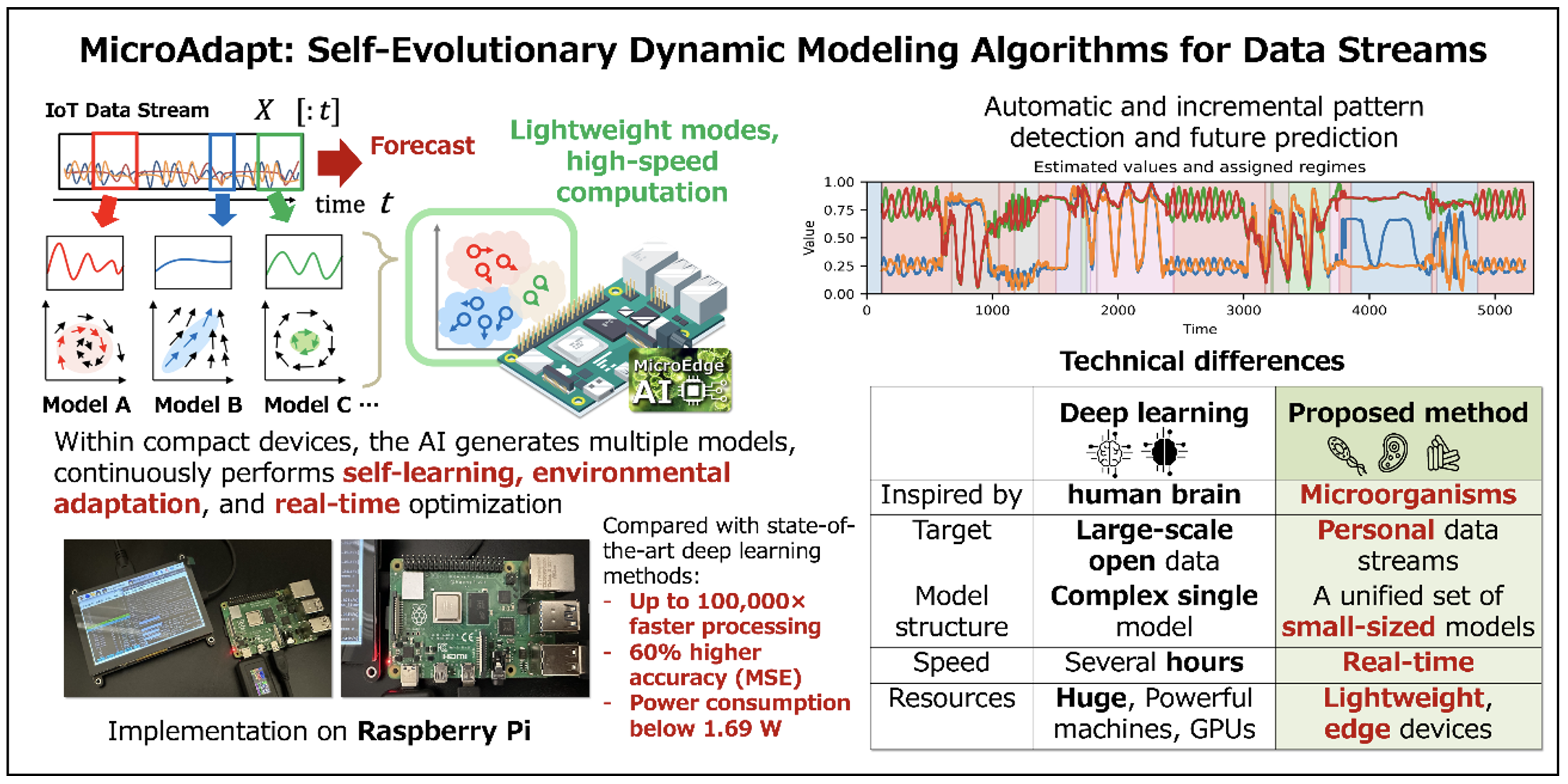UOsaka breatkthrough: World’s fastest and most accurate self-evolving edge AI for real-time forecasting
New MicroAdapt technology enables real-time learning and forecasting on compact devices, proving up to 100,000 times faster and 60% more accurate than state-of-the-art deep learning methods
Osaka, Japan - Researchers from The University of Osaka’s The Institute of Scientific and Industrial Research (SANKEN) have successfully developed a groundbreaking “self-evolving” edge AI technology that enables real-time learning and forecasting capabilities directly within compact devices. This innovation, termed MicroAdapt, achieves unprecedented speed and accuracy. It processes data up to 100,000 times faster and achieves up to 60% higher accuracy compared to conventional state-of-the-art deep learning methods. This achievement represents a major advance toward next-generation real-time AI applications across manufacturing, automotive IoT, and medical wearables, addressing critical limitations of existing cloud-dependent AI.
There is a growing demand for high-speed AI processing in compact, resource-constrained edge devices, such as embedded systems in manufacturing, automotive IoT, and implantable/wearable medical devices. Previously, edge AI typically involved pre-training large models using big data and deep learning in extensive cloud environments. These static, fixed models were then deployed to edge devices solely for inference (prediction), not for learning. This approach, while improving accuracy with more data, demanded vast data volumes, processing time, and power, making it unsuitable for real-time data processing or rapid model updates directly within small devices. Furthermore, these cloud-dependent methods face persistent challenges with communication costs, data privacy, and security. A globally established technology for real-time learning in compact edge environments had not been achieved.
Professor Yasuko Matsubara's research group has developed MicroAdapt, the world's fastest and most accurate edge AI capable of real-time learning and prediction within these small devices. Unlike conventional AI that trains complex, single models on big data in the cloud, MicroAdapt differently. First, it decomposes incoming, time-evolving data streams into distinctive patterns directly on the edge device. Second, it then integrates numerous lightweight models to collectively represent this data. Third, inspired by the adaptation of microorganisms, the system autonomously and continuously iterates self-learning, environmental adaptation, and evolution. It identifies new patterns, updates its simple models, and discards unnecessary ones, enabling real-time model learning and future prediction. Fig1 overviews the proposed MicroAdapt technology enabling real-time learning and forecasting within compact edge devices.

This cutting-edge method has demonstrated superior prediction accuracy and computational speed, achieving up to 100,000 times faster processing and 60% higher accuracy compared to state-of-the-art deep learning prediction techniques. The team successfully implemented this self-evolving edge learning mechanism on a Raspberry Pi 4. The implementation demonstrated its practicality by requiring less than 1.95GB of memory and consuming less than 1.69W of power, all while running on a lightweight CPU without powerful GPUs. This innovative work was presented at the 31st ACM SIGKDD 2025 conference.
"Our high-speed, ultra-lightweight edge AI for small devices enables diverse real-time applications. We are advancing their practical use with industry partners in manufacturing, mobility, and healthcare for broad industrial impact."
More Information
Title: MicroAdapt: Self-Evolutionary Dynamic Modeling Algorithms for Time-evolving Data Streams
Authors: Yasuko Matsubara, Yasushi Sakurai
DOI: 10.1145/3711896.3737048
Funded by: Japan Science and Technology Agency
Article publication date: 08-AUG-2025
Reference URL
Yasuko Matsubarra (The University of Osaka)
https://www.dm.sanken.osaka-u.ac.jp/~yasuko/

